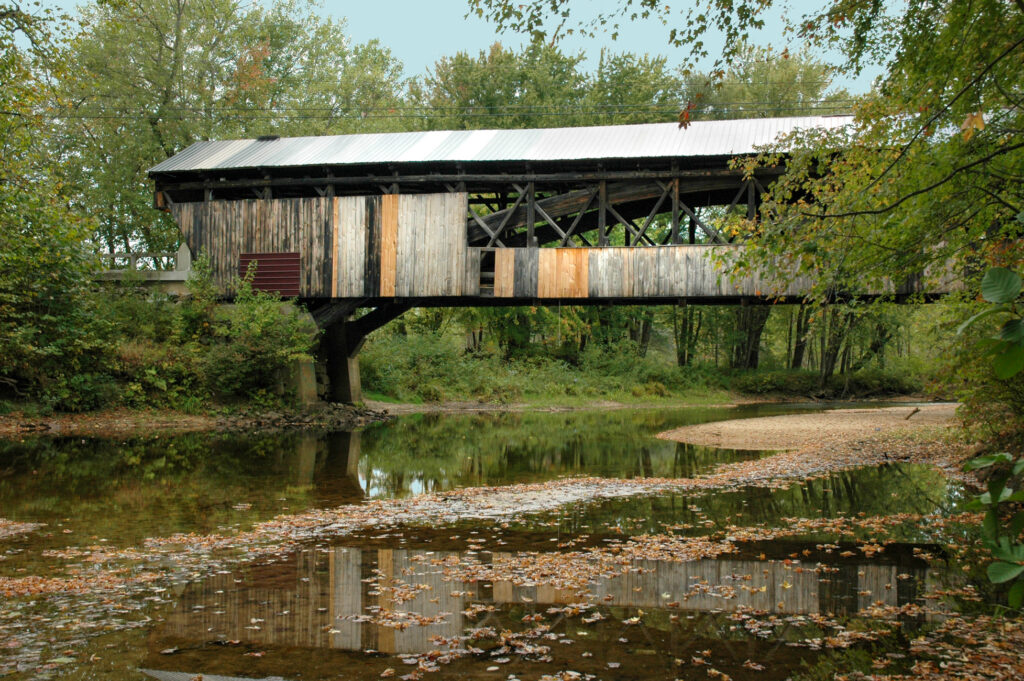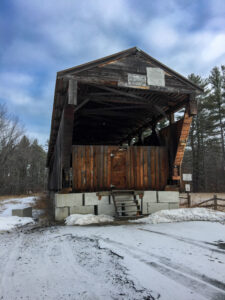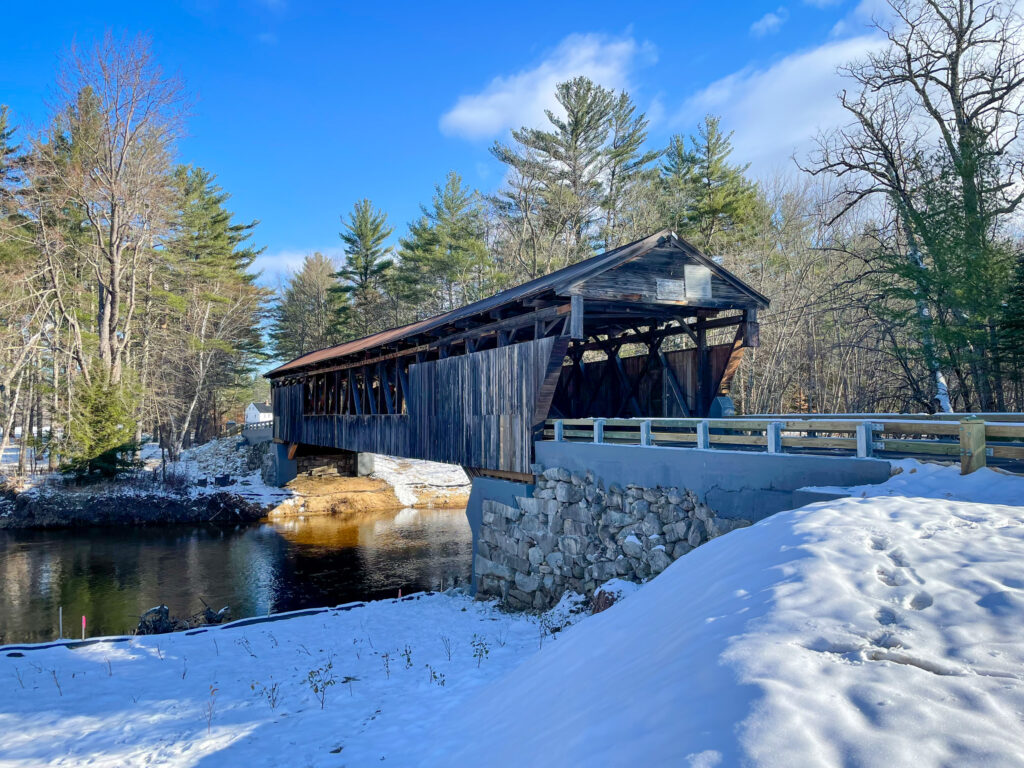We are honored to announce that the Whittier Covered Bridge Rehabilitation project won a Preservation Achievement Award for 2024 through the New Hampshire Preservation Alliance.
For decades, this organization has recognized exemplary projects that embody what it means to strengthen communities and stimulate local economies through protecting and reviving historic structures and places.

About the Bridge
The Town of Ossipee, New Hampshire (owner of the Whittier Covered Bridge) utilized both Design-Build (DB) and Design-Bid-Build (DBB) delivery methods for the bridge rehabilitation, with Hoyle Tanner serving as the Town’s engineer for the DB phase and designer on the DBB phases. The bridge is a 133-foot-span, Paddleford with Arch truss built in 1870 and was relocated away from the river in phase 1, rehabilitated in place for phase 2 and relocated back over the river in phase 3.
We provided on-call consultation, review of all technical documents and construction-phase administration and observations. In the final phase, we also served as the design engineer to raise the bridge above the 100-year flood elevation, return the bridge to service on modified abutments and provide extensive stream restoration measures with support from Headwaters Hydrology, LLC.
Overcoming Project Challenges
Throughout the project, our team encountered some challenges to overcome while completing the project in three phases with multiple sources of funding, permitting and the condition of the bridge which had undergone multiple rehabilitations in the past.
Multiple construction phases were required and were a challenge due to initial funding limitations; however taxes provided funding in all phases. The first phase was partially funded through the New Hampshire Land & Community Heritage Investment Program (LCHIP) while we assisted the Town and NHDOT with the completion of two successful funding applications to the National Historic Covered Bridge Preservation Program (NHCBPP) for phases 2 and 3. In total, Hoyle Tanner was the engineer on 10 projects in the NHCBPP with a total grant value of $7.5 million.
Our permitting challenges arose from acquiring federal and state permits in an ecologically sensitive area. Due to the length of time between phases, a Programmatic Categorical Exclusion was completed for each of the three phases. Careful design preparation focused rehabilitation on those structural items necessary to the bridge’s function, along with timely and thorough inclusion of NH Division of Historical Resources in each phase and the design process, resulted in a “No Adverse Effect” determination for the project. Because the Bearcamp River is listed as an Essential Fish Habitat for Atlantic salmon, coordination with NOAA/National Marine Fisheries Service to evaluate the potential impact from the project also occurred. Hoyle Tanner’s positive relationship with resource agency staff was essential in obtaining the required permits for the project.

Our final challenge during this rehabilitation was a combination of the poor condition of the bridge and portions of previous rehabilitations in the 1940s and 1983 that altered the bridge’s trusses and floor system. Our covered bridge experts initially evaluated the bridge and determined that it should be moved to the approach roadway while additional funds were obtained. We then served as the Town’s review engineer on the DB phase which rehabilitated the bridge in-place. As the previous bridge in this location was lost to flooding and the current bridge had been damaged several times since, we designed modifications to the abutments and approach roadway to raise the bridge two feet to limit threats from flooding. In the final phase, extensive river work was completed to alleviate scour concerns for the abutments and improve river flow under the bridge.
On September 14 and 15, 2022, the bridge was once again relocated to its rightful place over the Bearcamp River and re-opened to pedestrian traffic later that year, satisfying a long-term goal of the Town to preserve the bridge for future generations.
Bridge Services
In an industry where critical infrastructure is being funded, designed and constructed through many regulatory agencies, it is important that a design partner can provide the full range of requirements necessary for bridge construction.
Our team has extensive experience in the rehabilitation of historic structures and NBIS bridge inspection. From bridge design, safety inspections, capacity ratings, emergency response services, or making a recommendation on which problems to prioritize, our trusted experts can help! We are committed to each project because we’re committed to the communities where we live and work. Reach out to Sean James, PE, Division Manager-Ground Transportation Services, if your community could use our expertise!










